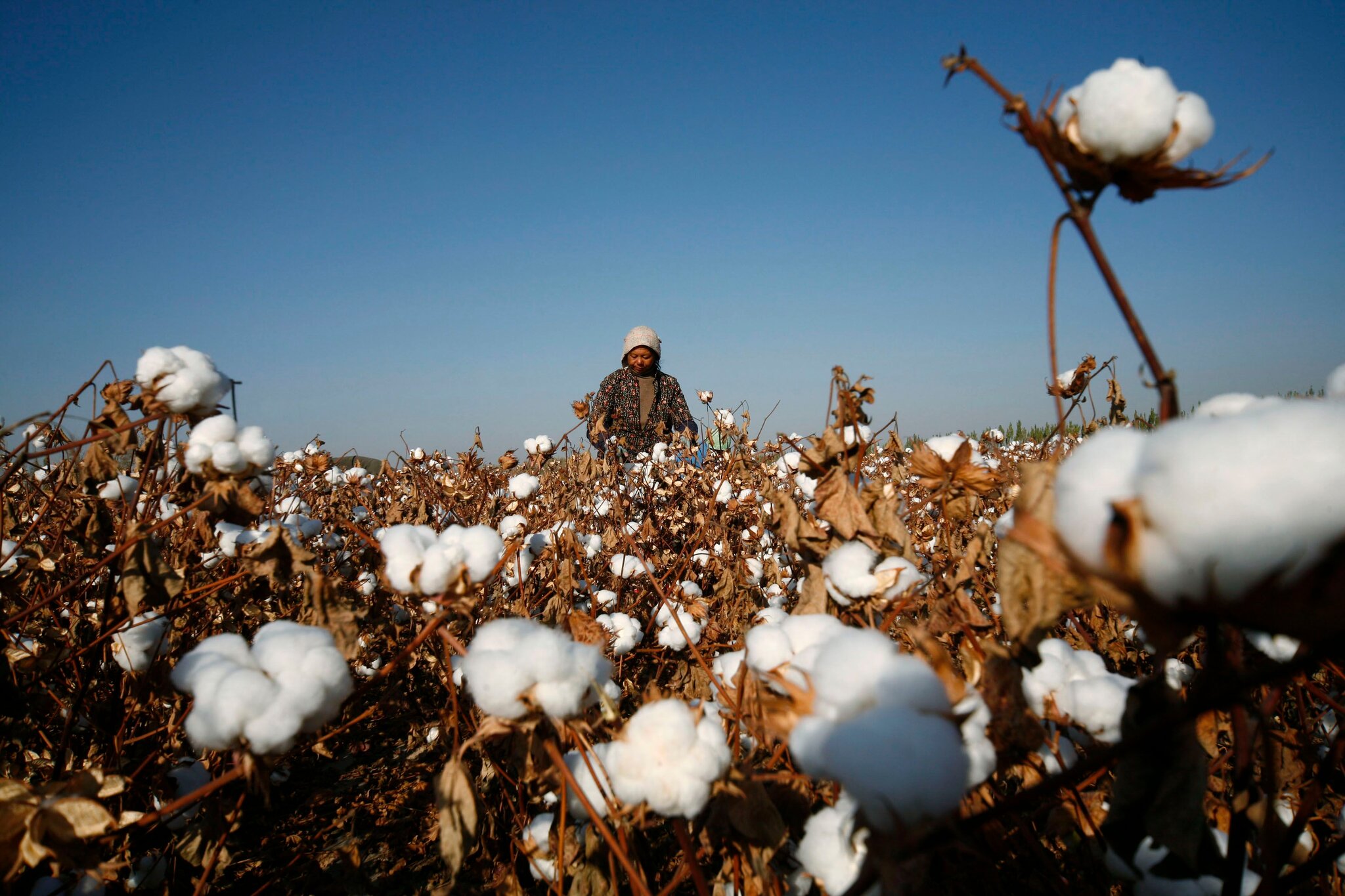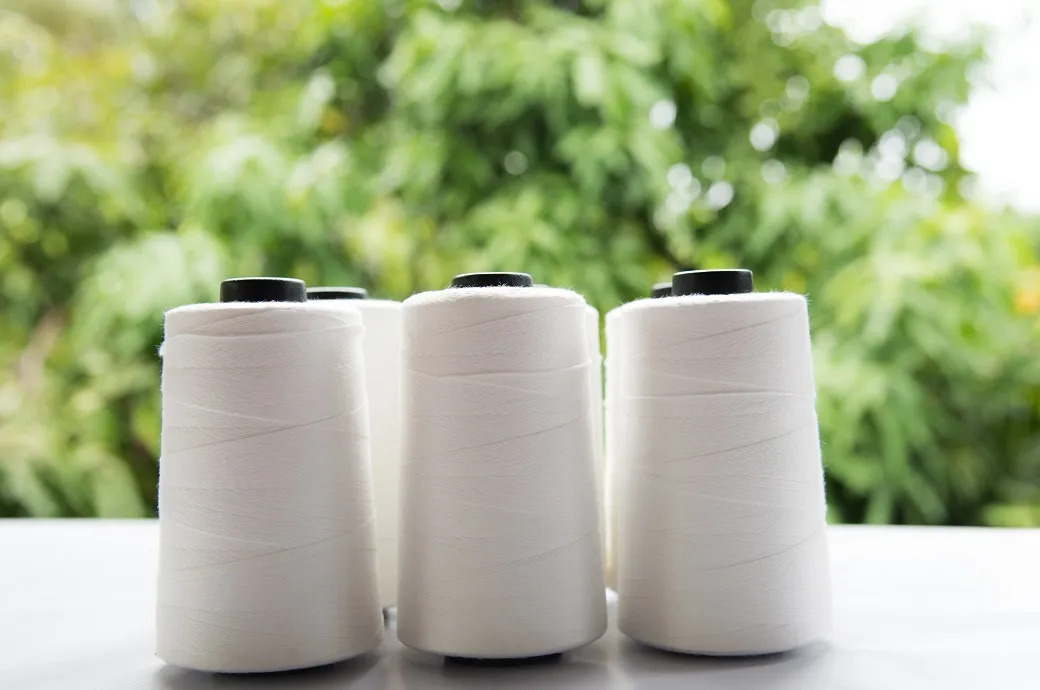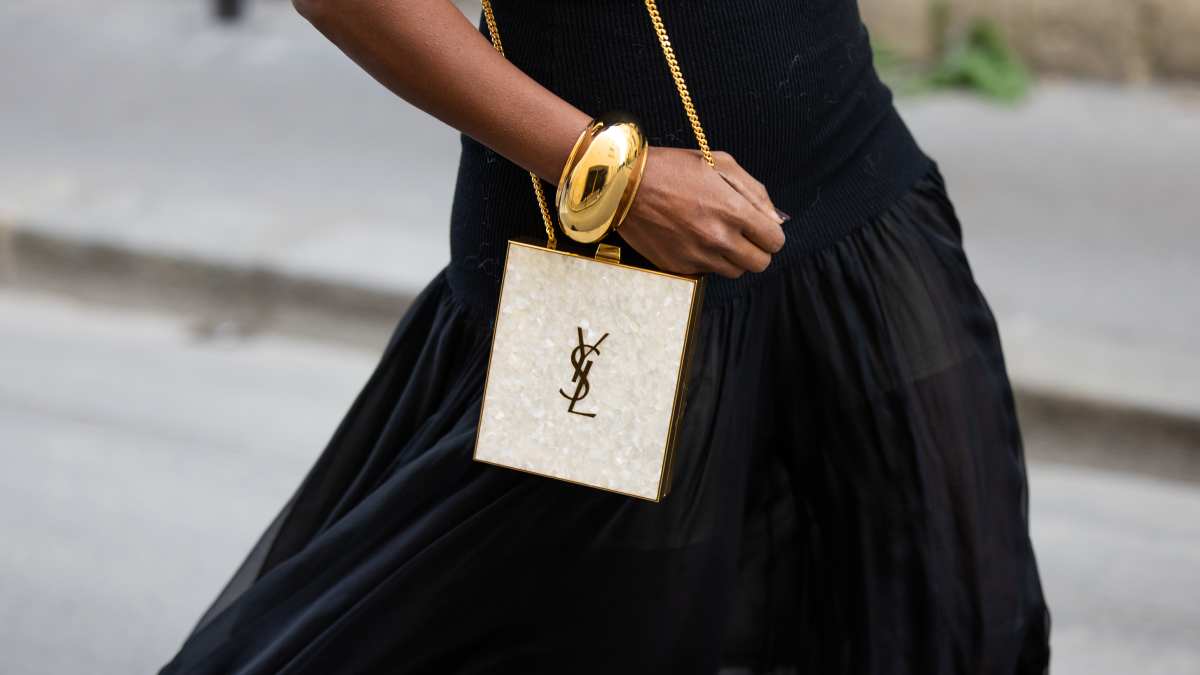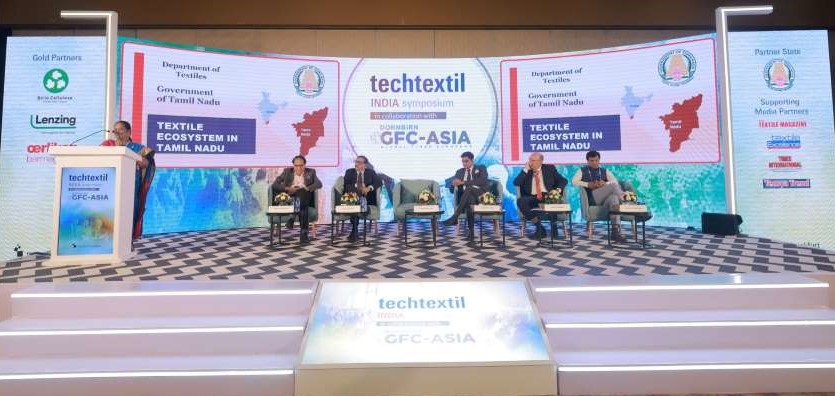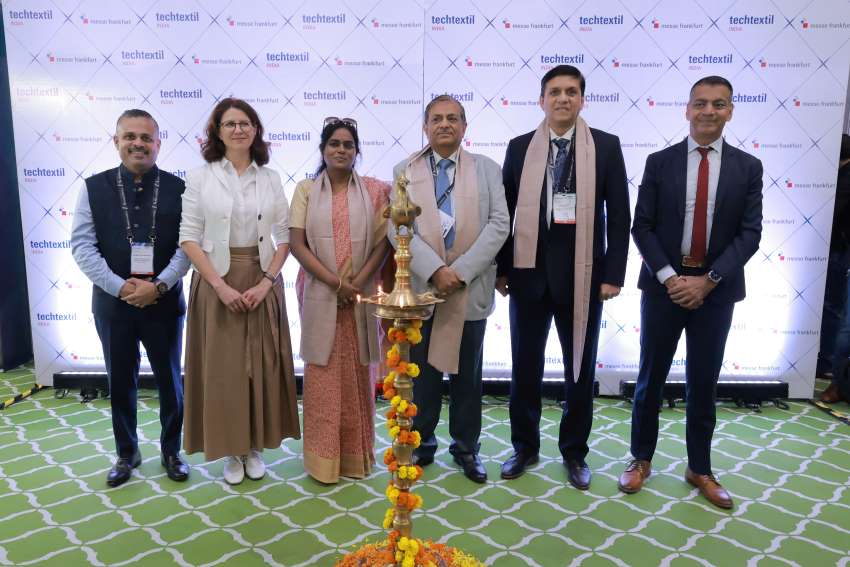FW
According to a new knowledge paper released by the Confederation of Indian Textile Industry (CITI), India needs a multi-pronged strategy to strengthen ‘farm to factory; practices in its cotton sector and build export-ready ecosystems to meet the national target of $100 billion in textile exports by 2030.
The paper argues, the Indian cotton sector is at a critical crossroads where long-term growth hinges on the convergence of sustainability, innovation, and trade competitiveness, given the current challenges facing cotton production.
To secure a competitive edge in global markets, CITI calls on the government and industry to focus on promoting production of high-quality cotton by using certified seeds and sustainable farming practices. It should implement traceability systems and global certifications to guarantee consistent quality. The government should actively promote organic, fair-trade, and circular farming models. These sustainable cotton variants can command 20 per cent to 30 per cent higher prices in premium global markets.
Further, the paper states, there is a need to streamline procurement and stabilization mechanisms to ensure farmers receive better prices and reduce reliance on middlemen.
It also emphasizes, collaborative efforts between farmers, industry, and policymakers are crucial for ensuring Indian textiles consistently meet global benchmarks for quality, sustainability, and ethical sourcing.
Finally, the report highlights the necessity of supporting industry-led innovation in smart textiles and organic blends. This is particularly important given that India’s technical textiles market is already projected to reach $40 to $50 billion by 2025. Coordinated action, backed by strong policy, investment, and technology transfer, is essential for securing the sector's long-term future.
B2B platform dedicated to connecting men’s fashion buyers, retailers, and brands, Shift is moving to a new, inspiring location called the Kromhout Hall in Amsterdam.
Along with the move to the spacious new hall, Shift is also introducing a revamped format: the event will now take place over a single, compact day on January 19, 2026. A one-day setup better fits the demanding schedules of men’s fashion buyers and retailers, making attendance more efficient and effective..
The Kromhout Hall not only accommodates the familiar plug-and-play system but also offers more room for open-space concepts. This flexibility gives brands the opportunity to build their own custom stands or create dynamic shop-in-shop experiences. The result is a more dynamic event where visitors can explore brands, trends, and innovative concepts in multiple ways.
This year, the Reframe concept returns within Shift, serving as a dedicated platform for companies that do not offer clothing collections but are vital to the future of retail. A curated selection of these businesses will demonstrate how design, storytelling, and technology help stores connect more powerfully with their customers. Visitors are encouraged to rethink their retail spaces, recognizing that retail is now about experience, emotion, and relevance, not just products.
To make the visit even more enjoyable, Shift is offering free entry along with a selection of complimentary snacks and refreshing drinks, provided by the organization and its partners. Launched in January 2025 by the co-founders of Modefabriek, Shift aims to be an accessible yet professional men’s fashion platform focused on quality, inspiration, and connections. The move and the new one-day format mark a significant next step in the event’s development.

Delivering a compelling message on the future of the cotton industry in a virtual address at the Global Cotton Conference, renowned global consultant in cotton analytics, Dr Terry Townsend, argued that the path forward lies in a dramatic acceleration of technology, particularly in seed science, to combat stagnant production and declining prices. The key is striking a delicate balance between fostering innovation and protecting the intellectual property (IP) that drives it, he said.
The Global Cotton Conference was organized by India’s Ministry of Textiles and CITI on October 7, 2025,
The new frontier of seed technology
Townsend highlighted a global trend toward conscious mechanization and advanced seed technology. He pointed to major cotton-producing countries like the United States, Brazil, and Australia, where farmers are increasingly planting seeds with multiple ‘stacked gene’ biotech traits. These traits are the product of significant research and development, essentially enabling cotton plants to achieve higher yields and effectively resist climate-related stresses, pests, and diseases, he explained.
For nations that do not permit biotech crops, scientists are developing a new subset of gene-bending technologies. These innovations help non-biotech nations adopt some of the desired traits through dedicated breeding processes, ensuring that innovation benefits the entire global market. This push for advancement is accelerating, fueled by breakthroughs in AI, GPS systems, and precision agriculture. These cutting-edge tools allow for the precise application of inputs like seeds and chemicals, maximizing efficiency in the field and critically boosting yields.
Townsend emphasized, this technological growth is a necessary response to a persistent global challenge: while world cotton production has held steady at around 25 million tons for two decades, real cotton prices have been on a continuous downward trend for over 50 years. This downward pressure on prices is unforgiving, meaning that businesses must become dramatically more productive simply to remain profitable.
The high cost of innovation and the IP imperative
While the benefits of technology are clear and desperately needed, Townsend was quick to point out a major hurdle: technology development is expensive. The research, development, and commercialization of a single seed variety can cost millions of dollars and take years of work. As a result, companies simply won't invest the required capital into new technologies if they aren't guaranteed a viable return on their investment.
This brings the issue of intellectual property (IP) protection to the absolute forefront. Townsend asserted that strong, enforceable IP laws are essential for creating an environment where technology developers feel secure enough to invest their resources. Without it, the flow of new, critical technologies to farmers will slow dramatically. This stagnation would make it difficult, if not impossible, for the industry to keep pace with global population demands and the increasing severity of environmental challenges. He noted clearly that countries with robust research systems and strong IP protection are the ones that will continue to grow and lead the industry into the future.
A sustainable future through technology
Beyond purely economic concerns, Townsend also touched on the critical role of technology in achieving sustainability. He noted, consumer and regulatory concerns about the environmental impact of cotton are growing steadily. He opines, technology is the critical mediator in making the world's cotton production more sustainable. The ability to use precision inputs and develop climate-resilient crops will not only secure better yields but also help the industry overcome the destructive extremes of climate change.
Italian textile machinery manufacturers are set to make a major impact at ITMA Asia + CITME Singapore 2025, taking place from October 28 to 31.
Despite geopolitical uncertainties, over 100 companies from Italy will showcase their latest innovations across 4,000 sq m.
Around 53 of these Italian exhibitors will be grouped within the National Sector Groups, organized by ACIMIT (Association of Italian Textile Machinery Manufacturers) and the Italian Trade Agency (ITA).
ITMA ASIA + CITME remains the essential showcase for machinery manufacturers targeting the Asian market, which currently accounts for 50 per cent of global exports, valued at €8.8 billion in 2024. China and India are the leading importers, making the region crucial for Italian firms. In 2024, Italian textile machinery exports to Asia reached €664 million. In H1, FY25, sales to the area continued to grow, reaching €317 million, with China, India, Pakistan, and Bangladesh being the primary destinations for Made in Italy technology.
Marco Salvade, President, ACIMIT notes, the event provides an excellent opportunity to display their updated technological supply. The choice of Singapore allows Italian exhibitors to engage with many Southeast Asian markets, which are becoming increasingly important manufacturing hubs, he said.
Italian manufacturers will present a wide array of advanced solutions covering the entire textile value chain. Visitors can expect to see digitalization tools for better efficiency, automation systems for smarter production, and a strong focus on sustainable technologies. This includes machinery designed to optimize energy and water use while maintaining high quality, combining Italy's textile tradition with cutting-edge innovation.
Giorgio Calveri, Director, ITA Singapore, confirms, with 86 per cent of its €2.1 billion production exported, Italy’s textile machinery industry views ITMA Asia + CITME as a strategic opportunity to reinforce its position as a trusted partner for advanced, sustainable, and competitive technologies in the key Asian region.
UK-based Fibre Extrusion Technology is launching its FET-500 Series of Gel Spinning Systems to transform the research and development of Ultra-High Molecular Weight Polyethylene (UHMWPE) fibers.
FET has an established reputation for innovation and expertise in medical fiber extrusion, providing high-performance, specialized equipment for precursor medical products, including custom systems for making both absorbable and non-absorbable sutures. FET’s equipment is designed for flexible, small-scale production and rapid product development.
In recent years, the demand for R&D in UHMWPE fibers has grown significantly. These fibers are highly valued across many industries for their exceptional properties. However, current production methods are complicated and focused on the massive, large-scale output of existing fiber grades. This rigid supply chain has slowed down innovation in this promising, untapped product market.
Set to fill this market gap, the FET-500 gel spinning systems offers a flexible and consistent process, capable of producing high-quality fibers using less than 100 grams of polymer. Crucially, it avoids the harsh processing chemicals that were traditionally used in gel spinning.
The key to this lab and pilot-scale flexibility is a patent-pending process that uses supercritical carbon dioxide (scCO2) as a green solvent.
While gel spinning starts with extrusion, the follow-up steps of washing and drawing are vital for achieving the final performance characteristics of the yarn. The use of patent-pending Supercritical Carbon Dioxide in the washing process is just one example of the system's many innovative features and benefits.
FET's Fibre Development Centre in Leeds, where the manufacturing takes place, was crucial to the creation and success of the FET-500. Having this facility on-site allows FET to offer a way for customers to de-risk, develop, and demonstrate the system’s capabilities.
FET maintains a complete, operational demonstration line of the FET-500, enabling both existing and new customers to visit and see the system running from start to finish. FET can also assist in developing new products and operating parameters through R&D trials, giving you the confidence and knowledge needed to successfully transfer a new offering onto a full production line.
The MarediModa Cannes trade show is returning to the French Riviera's Palais des Festivals from October 22 - 24, 2025. This essential industry event will exclusively feature over a hundred new collections of fabrics and accessories for Summer 2027 beachwear, underwear, and athleisure from Europe's top textile manufacturers.
MarediModa continues to serve as the definitive showcase for premium and upper-medium market fabrics, pairing business with creative inspiration.
Visitors will get exclusive, early access to the official Spring/Summer 2027 Trend Book, ‘Making Waves.’ The theme encourages the fashion community to go beyond surface aesthetics, challenge norms, and drive meaningful transformation toward a more conscious future.
The show highlights young talent through The Link, a premier talent-scouting competition. In 2025, the contest achieved a record-breaking year with 128 projects submitted from 37 countries. Nine finalists, who explored creative boundaries in beachwear, underwear, and athleisure, will present their creations in a dedicated atelier and feature in a fashion show on October 23.
MarediModa is moving past static displays with three new experiences: Flash! (bringing beachwear fabrics to life through prototype garments and exclusive photo/video shoots), ATH (exploring athleisure trends where fashion meets performance), and Seam (celebrating private label craftsmanship).
The event also champions sustainability and excellence. The Lycra Company will host a key seminar on October 22 titled, ‘From Fiber to Sustainable Swimwear: A Blueprint for Collaboration,’ addressing how innovation and partnership are reshaping the future of fashion.
Furthermore, the prestigious French brand Eres will be honored with the 2025 Creative Excellent Award for its lasting contribution to fashion, product excellence, and its iconic, minimalist approach to lingerie and beachwear.
Since its founding in 2002, MarediModa has established itself as the leading international show dedicated to European textile excellence, focusing on quality, sustainability, and creativity to shape the future of intimate and swimwear apparel.
The global hemp fiber market is projected to grow from $20.96 billion in 2025 to $70.93 billion by 2029, expanding at a compound annual growth rate (CAGR) of 35.6 per cent. This rapid expansion is driven by a renewed focus on environmental sustainability, high demand from the textile and apparel industries, a surge in hemp cultivation, and broader awareness of sustainable fabric alternatives.
A core driver of this growth is the increasing legalization of industrial hemp worldwide. Derived from the Cannabis sativa plant, industrial hemp is valued globally for various products. Progressive legislation is directly fueling the use of its fibers and seeds. For instance, in Australia, support for legalization surpassed opposition for the first time in February 2024, signaling a global shift that will continue to bolster the market.
Hemp's natural, renewable, and biodegradable properties align perfectly with the global emphasis on a circular economy. This factor, combined with the wider adoption of hemp-derived textiles, makes it a superior choice for sustainable manufacturing.
Companies are innovating to secure their market presence by expanding hemp's use into new sectors like personal care and hygiene. For example, in April 2022, Regenerative International Female Inc. launched a hemp-based line of menstrual hygiene products. These eco-friendly pads combine hemp and organic cotton and feature a biodegradable backsheet, leveraging hemp’s natural antimicrobial nature to offer a comfortable, non-synthetic alternative.
Looking ahead, major trends include the use of hemp fiber in Sustainable Packaging, the Paper and Pulp sector, and the Automotive and Construction industries. This broad expansion is further supported by continuous progress and refinement in hemp processing methods.
The Asian Development Bank (ADB) has signed a $30 million sustainability-linked loan (SLL) agreement with Envoy Textiles, marking the bank’s first-ever SLL in Bangladesh. This landmark financing deal signals a major shift toward integrating environmental accountability with industrial funding in the country’s crucial manufacturing sector.
A sustainability-linked loan is a forward-looking debt instrument designed to incentivize companies by linking its financial terms directly to their performance on specific environmental and social goals. For Envoy, the loan's terms are tied to key performance indicators (KPIs) focused on two main goals; namely, increasing the total installed rooftop solar capacity and achieving specific reduction in greenhouse gas emissions.
By embedding these metrics, the ADB aims to drive measurable climate action and industrial modernization across Bangladesh’s massive ready-made garment (RMG) sector, which accounts for over 80 per cent of the country’s total export earnings.
Envoy will use the loan to fund the design and construction of a new automated spinning unit at its Jamirdia plant. This expansion will boost the company's annual yarn production capacity by 4,550 tons, primarily supporting its in-house denim fabric production.
Crucially, the financing will also cover the installation of 3.5 megawatts-peak (MWp) of rooftop solar panels. This significant renewable energy investment is expected to substantially reduce the factory’s carbon emissions, directly supporting Bangladesh’s national decarbonization targets under the Paris Agreement and its Vision 2041 development plan. A portion of the loan will also refinance short-term working capital, freeing up resources for further operational innovation.
Envoy, a pioneer in sustainable textile production and the world's first denim manufacturer to receive Platinum LEED certification, is positioned to lead this transformation.
According to Hoe Yung Jeong, Country Director, Asian Development Bank, this partnership advances environmental sustainability and sets a new standard for modernization and resilience in the garment industry.
As the world’s second-largest garment exporter, Bangladesh faces mounting global pressure to decarbonize supply chains. The success of the ADB-Envoy partnership demonstrates how green finance can act as a catalyst, rewarding manufacturers for turning environmental responsibility into a core business and a source of competitive advantage.
![]()
The global textile and apparel industry, one of the oldest and most resource-intensive sectors, is at a crossroads. Once defined solely by low-cost mass production and global export networks, it is now being reshaped by two transformative forces: sustainability and digital innovation. Rising consumer expectations, tightening regulations, and technological breakthroughs are forcing companies to rethink not only how clothes are made, but also how they are sold, used, and recycled. This is not a mere industry adjustment, it is a paradigm shift that could determine which brands thrive and which fade in the coming decade.
Growth amid transformation
Despite mounting challenges, the textile sector continues to grow, underscoring its economic weight in global trade and manufacturing. According to multiple market forecasts, growth remains steady, albeit with regional shifts and structural disruptions.
Table: Global textile market projections
|
Year |
Market Size ($bn) |
|
2024 |
$1.9 - $2.1 |
|
2029 |
$857.6 - $915.9 |
|
2034 |
$4.0 - $4.4 |
Asia-Pacific, home to the world’s largest manufacturing hubs in China, India, Bangladesh, and Vietnam, dominates with more than half the global market share. Yet, regions like North America and Europe are redefining their value proposition by investing in innovation, automation, and nearshoring. This reflects a dual trend: production remains rooted in Asia, while consumer-facing innovation is flourishing in developed economies.
There are several growth drivers that are boosting the sector. Conscious consumers are one of them with rising demand for sustainable, ethically produced garments. The rapid e-commerce expansion with digital platforms enabling borderless retail access has also been a major booster. Then there this the whole aspect of technological integration as AI, blockchain, 3D printing, and automation are powering efficiency.
Breaking the fast fashion cycle
The apparel industry’s take-make-dispose model, popularized by fast fashion, is now under scrutiny. The sector generates nearly 92 million tons of textile waste annually, and contributes up to 10% of global carbon emissions, a figure larger than international aviation and shipping combined.
Brands are facing growing pressure from governments, activists, and consumers to move toward circular business models, where waste is minimized, and materials remain in use for longer.
There are numerous notable case studies of brands working actively towards a sustainable business modes who together, represent a radical departure from the disposable ethos of fast fashion..
• Patagonia's worn wear program: The outdoor apparel company, a pioneer in sustainability, has successfully implemented a comprehensive repair, reuse, and recycling program. Through its ‘Worn Wear’ initiative, Patagonia encourages customers to repair their gear rather than replace it, offers certified used clothing for sale, and provides an avenue for recycling garments at the end of their life. This approach not only reduces waste but also builds brand loyalty by promoting a philosophy of conscious consumption.
• Primark's take-back scheme: In a move to address textile waste, fast-fashion giant Primark introduced a take-back scheme in its UK stores. Customers can return unwanted clothing, footwear, and textiles, which are then re-used or recycled by partners. This initiative helps divert millions of garments from landfills each month and shows how even large-scale, high-volume retailers are being compelled to participate in the circular economy.
• The rise of rental services: Businesses like Rent the Runway and smaller niche players are pioneering an access-based model. Instead of owning an item, consumers can rent it for a specific period. This increases the utilization rate of a single garment, reducing the overall demand for new production and aligning with the principles of a shared, rather than owned, economy.
Supply chain reinvented, from opacity to transparency
Global apparel supply chains, long criticized for low wages, unsafe conditions, and environmental harm, are being forced into the light. Technology is playing a central role in this reinvention, tackling issues ranging from labor exploitation to inefficient inventory management.
Table: Common supply chain challenges and solutions
|
Challenge |
Impact on business |
Technology-driven solution |
|
Lack of Transparency |
Unethical labor, environmental harm, difficulty in tracking products. |
Blockchain: Provides a secure and immutable record of an item’s journey from raw material to final product. |
|
Demand Forecasting |
Overstocking, stockouts, and financial loss. |
Artificial Intelligence (AI): Analyzes historical sales, market trends, and external factors to provide more accurate predictions. |
|
Prolonged Lead Times |
Missed seasonal trends, reduced competitiveness. |
Automation & Digital Platforms: Streamline operations, improve communication, and allow for real-time tracking of production. |
|
Sustainability |
Environmental footprint, consumer and regulatory pressure. |
Digital Printing & Waterless Dyeing: Reduce water usage and waste, offering a greener alternative to traditional processes. |
For many companies, the supply chain has become the battleground where reputations are made or lost. A single scandal whether related to factory conditions or environmental negligence can erode consumer trust overnight.
Industry at an inflection point
The next decade will test whether the apparel sector can align profitability with responsibility. Several trends are emerging as non-negotiables for future success:
Circular design: Moving beyond recycling to design garments with end-of-life in mind.
Digital-first operations: AI-driven forecasting, 3D sampling, and virtual try-ons will define competitiveness.
Localized production: Nearshoring and microfactories could reduce carbon footprints while improving speed-to-market.
Regulatory push: Governments, especially in the EU, are enforcing stricter sustainability and reporting norms.
As one apparel executive recently put it, “The industry is no longer just about selling more clothes it’s about selling the right clothes, made the right way, for the right reasons.”
Stitching the future
The textile and apparel industry is undergoing a once-in-a-generation transformation. Growth will continue, but the terms of that growth are changing. Companies that embrace sustainability, transparency, and digital agility are likely to thrive, while those clinging to outdated fast-fashion models risk irrelevance. The industry’s future will not be written in factories alone it will be sewn together by the choices of consumers, regulators, and innovators who demand that fashion’s next chapter be not just stylish, but sustainable.

The summer of 2025 brought an abrupt end to the modest recovery that China’s apparel industry experienced in the previous year. What was anticipated as a stabilization period turned into a struggle against compounding economic and geopolitical headwinds. From January to July, the main narrative was one of contraction, driven by geopolitical risk, high operational costs, and unprecedented weather disruptions that crippled production schedules during the traditional off-season.
The industry found itself trapped in a difficult transition: manufacturers were investing heavily in future high-tech production (evidenced by the surge in fixed-asset investment), yet their current profits were collapsing under the weight of weak overseas demand and intense price competition. The foundation for recovery, as the industry noted, needed drastic reinforcement.
The production paradox and output decline
The manufacturing heart of the apparel sector, enterprises ‘above a designated size’, showed clear signs of stress. The industrial added value fell by 1.2 per cent year-on-year, a marked increase in decline compared to the first half of the year. This fall was not merely a slowdown but a reversal of the moderate growth seen in 2024 (when industrial added value rose by 0.8 per cent Y-o-Y).
The physical output of garments mirrored this decline, dropping by 0.29 per cent Y-o-Y. This production slump points directly to manufacturers curbing capacity in the face of dwindling orders—a pragmatic response to falling profits, but one that signals deep-seated market anxiety.
The domestic lifeline and digital resilience
Domestically, the consumer remains cautious but present. Total retail sales of apparel goods above the designated size recorded a growth of 2.2 per cent (599.24 billion yuan). While this growth is slow, it is slightly stronger than the full-year 2024 rate of 0.1 per cent, suggesting that promotional activities or new product launches in the first half of 2025 provided a marginal lift.
The true example of resilience was the digital marketplace. Online retail sales of wearable items grew by 1.7 per cent Y-o-Y, growing slightly compared to the first half. This reflects two trends: the Chinese consumer prioritizing value and efficiency (often found online), and manufacturers increasingly relying on direct-to-consumer (D2C) channels to bypass sluggish traditional retail flows.
The export freeze and geopolitical diversification
China’s role as the world's apparel factory faced its most significant challenge from external pressures. Total apparel and accessories exports reached $88.62 billion, declining by 0.3 per cent year-on-year. This negative turn is critical when viewed against the prior year's performance.
Table: China apparel value trends
|
Period |
Export value ($) |
Y-o-Y Change |
Trend Observations |
|
Jan-July 2023 (Estimated) |
$89.7 billion |
Approx -8.2% (vs 2022) |
A sharp decline in export value, likely due to a post-pandemic inventory correction, high inflation, and a general slowdown in demand in key Western markets. |
|
Jan-July 2024 |
$88.98 billion |
-0.8% (vs 2023) |
The decline significantly moderated compared to 2023, suggesting the market was stabilizing after the massive drop in the previous year. |
|
Jan-July 2025 (Input Data) |
$88.62 billion |
-0.3% (vs 2024) |
The export value continues to decline, but the rate of contraction has nearly halted, indicating a strong movement towards market stabilization or a potential return to modest growth. |
The inability to grow exports, even marginally, underscores the success of the global China Plus One strategy, where major Western brands are diversifying sourcing to Vietnam, Bangladesh, and India due to ongoing US-China trade tensions and compliance concerns This shift impacts orders, particularly for low-to-mid-value, labor-intensive products.
The profit crisis vs. the investment bet
The most concerning data point is the dramatic collapse in corporate profitability.
Table: China textile & apparel industry financial performance
|
Indicator |
Jan-July 2025 |
2024 (Full Year) |
Implication (Jan-July 2025 vs. Full Year 2024) |
|
Total Main Business Income |
665.47 billion yuan |
1.27 trillion yuan (+2.76% Y-o-Y) |
Revenue contracting sharply: The 7-month income is barely half of the full 2024 income, indicating significant negative Year-over-Year growth compared to Jan-July 2024. |
|
Total Profit |
25.03 billion yuan |
62.38 billion yuan (+1.54% Y-o-Y) |
Plunge in Profitability: A direct Year-over-Year decline of −14.20% (The decline is not calculated from the full year number, but is the actual Y-o-Y change for Jan-July 2025 vs. Jan-July 2024). |
|
Operating Margin |
3.76% |
4.91% |
Severely Squeezed: The profitability margin fell by −1.15 percentage points (4.91% - 3.76%). |
A 14.20 per cent drop in total profit, alongside a 2.26 per cent revenue decline, suggests extreme margin compression. Companies are likely slashing prices to maintain market share or absorbing higher costs (labor, raw materials, compliance) without being able to pass them on to the final consumer.
In a counterpoint, fixed-asset investment in the garment industry grew by 25.2 per cent year-on-year. This investment is predominantly directed towards high-tech manufacturing, automation, and digitalization, a strategic long-term bet by China to shift the industry's focus from cheap, high-volume production to high-value, fast-response, and smart manufacturing, in line with the nation’s 14th Five-Year Plan focus on high-quality development.
The dual reality of h1 2025
The volatility of the market is best illustrated by the half-year performance of few Chinese listed apparel companies.
Semir Group: Retailer focus
• H1 2025 Revenue Growth: +3.26% Y-o-Y
• H1 2025 Net Profit Decline: −41.23% Y-o-Y
Semir, known for its strong domestic retail presence, successfully managed to increase sales, likely through aggressive promotion or effective product launches. However, the catastrophic decline in profit shows this revenue was bought at a severe cost, either intense discounting, growing marketing expenses, or rising operational costs. This is the clearest example of the profit crisis highlighted in the macroeconomic data.
HLA (Heilan Group): Resilience under pressure
• H1 2025 Revenue Growth: +1.72% Y-o-Y
• H1 2025 Net Profit Decline: −3.42% Y-o-Y
HLA, one of the more established domestic leaders, showed greater resilience. While its profit still declined (reflecting the unavoidable margin pressure), the small magnitude of the drop compared to its peers suggests superior supply chain management, stronger brand loyalty, or better cost controls. HLA's performance serves as a benchmark for stability, but even its core profitability was not immune to the market chill.
Table: China textile & apparel industry performance (Jan-July 2025)
|
Indicator |
Jan-July 2025 |
Jan-July 2024 (Y-o-Y Change) |
Historical Context (FY 2024) |
Trend Direction (Y-o-Y) |
|
Industrial Added Value |
+3.7% |
+3.7% |
Up 0.8% |
Counter-Cyclical Growth |
|
Garment Output (Volume) |
N/A |
-0.29% |
Up 4.22% |
Production Cutbacks |
|
Domestic Retail Sales (Apparel Value) |
599.24 billion yuan |
+2.2% |
1.07 trillion yuan (FY 2024) |
Slow Growth |
|
Exports (Apparel & Accessories Value) |
$88.62 billion |
-0.30% |
US$88.98 billion (Jan-July 2024) |
Export Stall |
|
Fixed-Asset Investment (Textile) |
N/A |
+25.2% |
N/A |
Sustained Upgrade |
|
Total Main Business Income |
665.47 billion yuan |
-2.26% |
Up 2.76% (FY 2024) |
Revenue Decline |
|
Total Profit |
25.03 billion yuan |
-14.20% |
Up 1.54% (FY 2024) |
Profit Collapse |
|
Operating Margin |
3.76% |
−1.15 ppt (vs. Jan-Jul 2024) |
4.91% (FY 2024) |
Margin Squeeze |
The Chinese textile and apparel industry therefore is experiencing a painful structural adjustment. The positive trends in industrial added value and fixed-asset investment highlight a successful government and industry-led push for modernization and high-quality development. However, this is overshadowed by acute commercial pressure from weak global and domestic consumption combined with fierce internal competition, which is driving a sharp collapse in profitability and a severe squeeze on operating margins. The industry is effectively sacrificing current profits for a future position as a higher-end, more automated, and technologically advanced global player.


